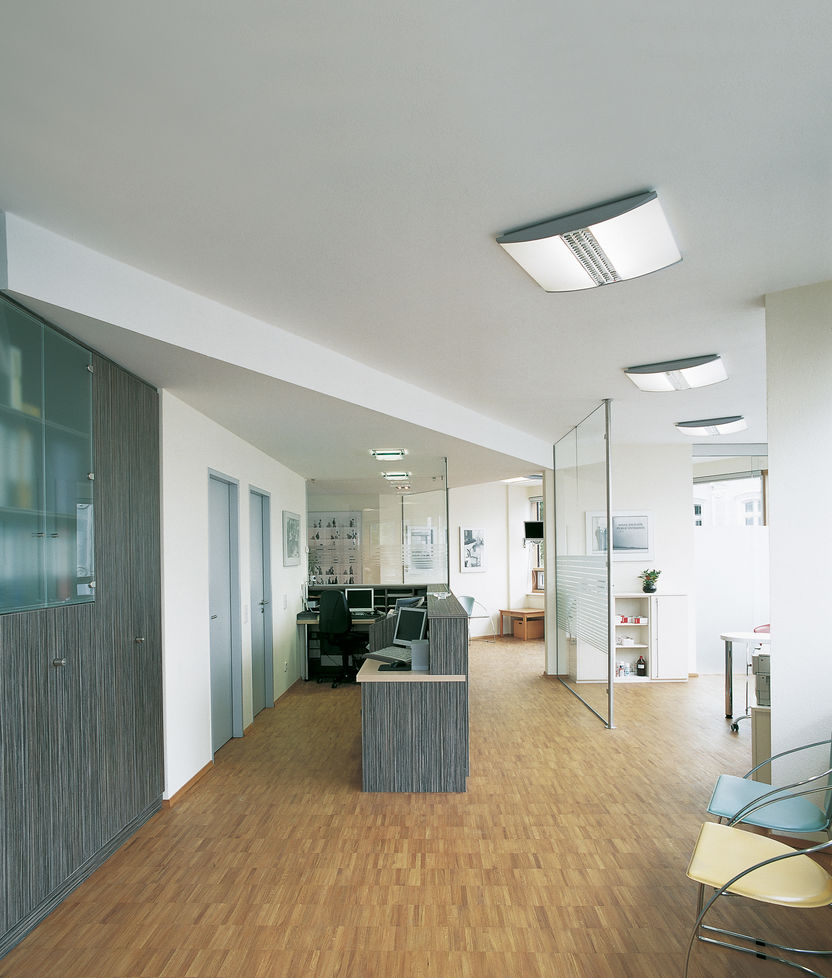
Basic lighting requirements and quality criteria

Office lighting is regulated by EN 12464-1 (see chapter "Guidelines, EU standards"). VDU workstation lighting must be suitable for all tasks which arise at the workstation, e.g. reading off the screen, reading printed texts, writing on paper, working with the keyboard. For these areas, the lighting criteria and the lighting system must be selected according to type of work, type of visual task and type of room following the afore-mentioned standard. In some countries, additional requirements apply.
Work at a screen or under certain circumstances can be impaired by reflections causing physiological and psychological glare. It is therefore necessary to select, place and arrange luminaires in a way that avoids reflections of higher luminance values (see fig.). The designer must determine the area for luminaire installation which can lead to disturbance, and choose type and arrangement of luminaire in a way that avoids disturbing reflections.
The requirements for lighting rooms with VDU workstations are derived from a series of fundamental criteria which particularly concern the screen, the user, daylight and work organisation.
Screen-related criteria concern the recognisability of screen information which depends on the workstation surroundings. Bright surfaces which reflect off the screen surface from the user’s point of view (see table) can affect information intake. Surfaces around the screen which are too bright can cause adaptation issues. The recognisability of screen information also depends on the illuminance present on the screen surfaces. High illuminance values on the screen surface can limit the recognisability of visual details.
User-related criteria: Good lighting prevents visual overstrain of the user and also takes into account varying lighting needs. However, lighting cannot compensate insufficiently corrected vision disorders. The viewing direction is usually horizontal, and rarely goes above that level. Sitting or standing position and switching in between change eye level and viewing direction of users. An ergonomic and aesthetic design of working and surrounding areas increases acceptance and well-being. Recognisability of faces, facial expressions and gestures is a significant criterion for visual communication.
Daylight-related criteria: This refers to visual connections to the outside, which have a positive psychological effect on human beings. However, daylight can also cause direct and reflected glare as well as decreased contrast in screen displays. Very high illuminance levels e.g. where screens are located too close to the window, can affect information visibility.
Organisation-related criteria deal with changes in room situation and, as required, a rearrangement of workstations. Certain types of work can lead to workstations being used by different people with varying needs (e.g. shift operation, desk sharing).